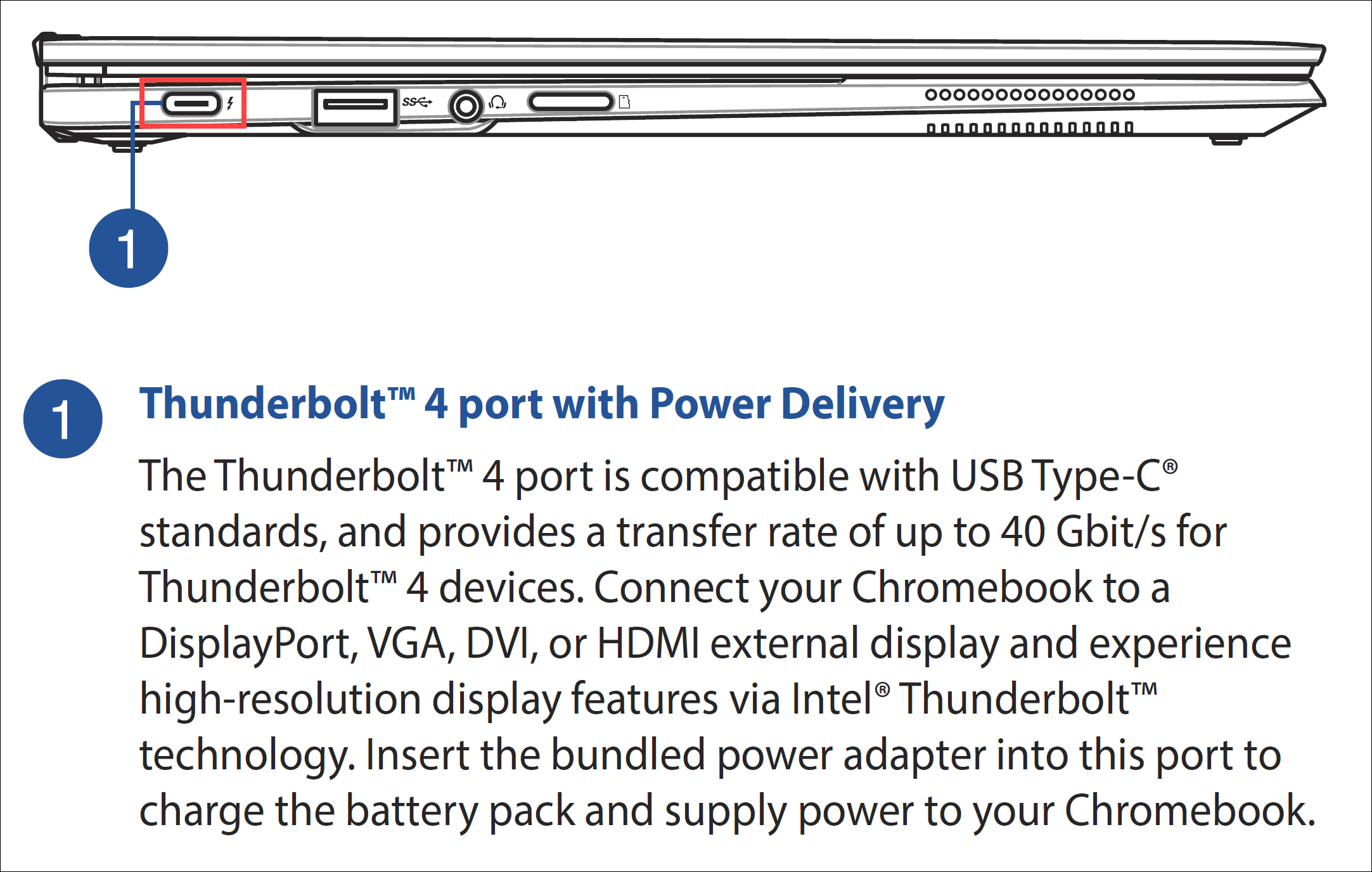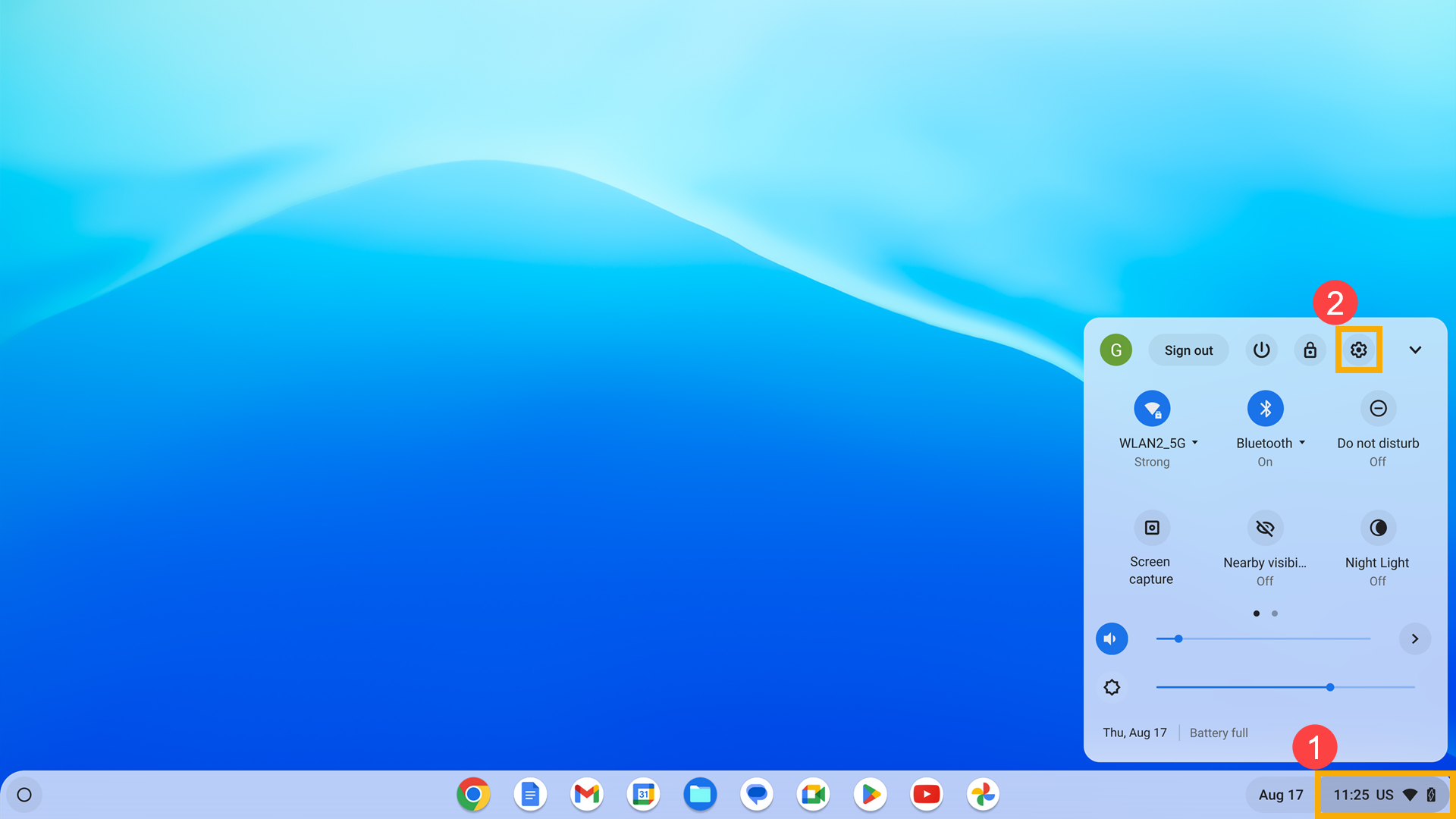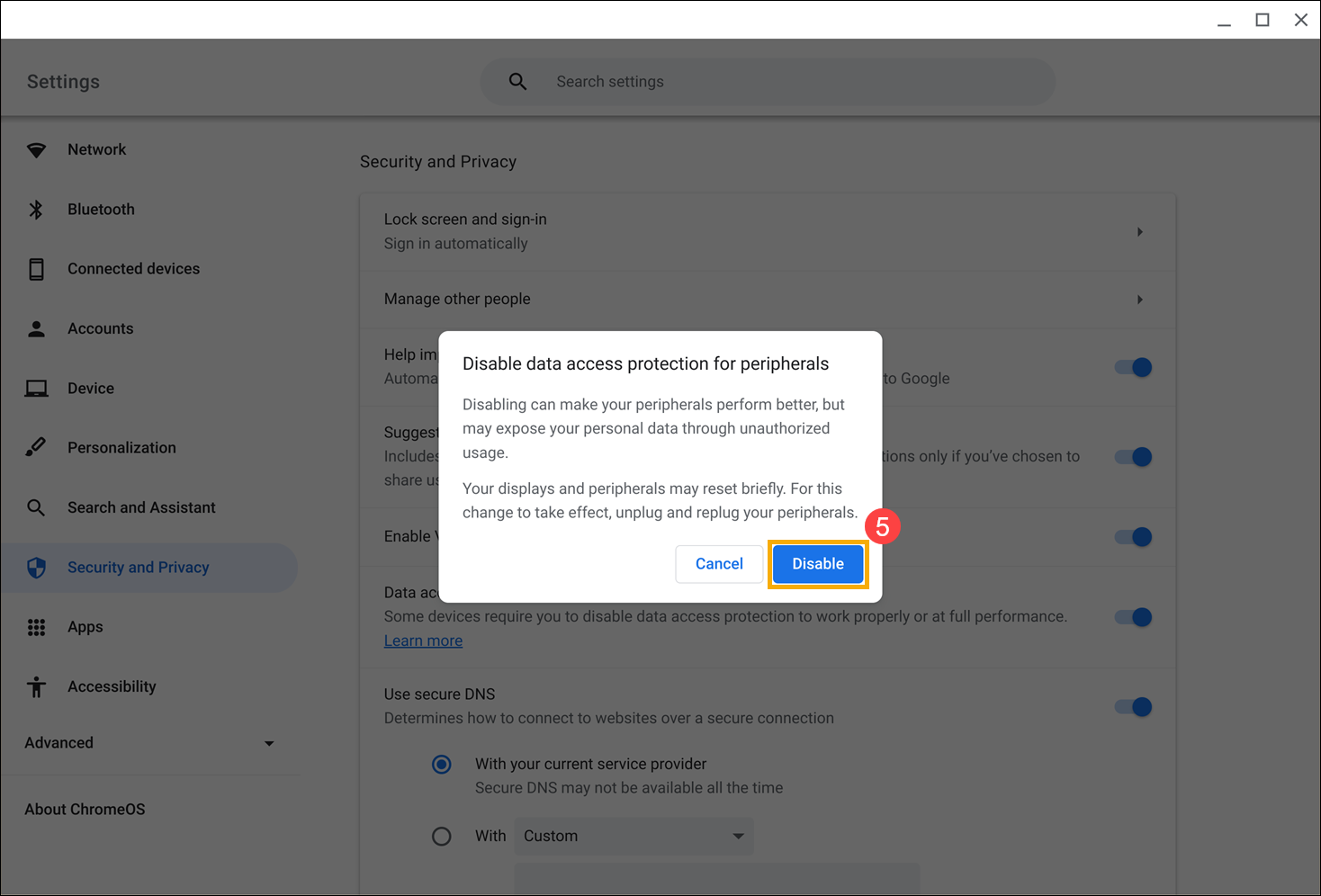Related Topics
[Chromebook] Troubleshooting - Chromebook USB Port Issues
If you're experiencing connectivity issues with the USB ports on your Chromebook, such as unrecognized external devices, unstable connections, or data transmission problems, please refer to the following troubleshooting steps.
Compatible USB External Devices for Chromebook
When connecting external devices to your Chromebook, ensure that the devices meet the following compatibility requirements, and if the connected devices use one of the following filesystems, Chrome OS can access the files.
Note: Make sure you're using the latest version of Chrome OS. To check for available updates, refer to this guide: Updating Chromebook's Operating System.
Chromebook can connect to the following accessories:
- Adapters
- Docking stations
- Drawing tablets
- Ethernet dongles
- External storage (SD and USB hard drives, thumb drives, USB CD-ROM, and read-only DVD-ROM)
Note: To remove a storage device safely, select the ‘Eject’ icon .
. - Gaming controllers
- Headsets
- Huawei mobile dongle
- Keyboards
- Mice
- Microphones
- Monitors with DisplayPort, DVI, HDMI, USB-C, or VGA connections (may require USB adapters)
- MP3 player or mobile phone with a USB cable
- Printers (Learn how to set up your printer)
- USB-C cables
- Webcams
For best results, look for accessories that are certified Works With Chromebook. These accessories have been tested and proven to meet Chromebook compatibility standards, to ensure they work seamlessly with your Chromebook.
Accessible Filesystems:
- FAT (FAT16, FAT32, exFAT)
- HFS+ (read-only on journaled HFS+)
- ISO9660 (read-only)
- MTP
- NTFS
- UDF (read-only)
The above information is cited from the following source. Please refer to the provided source for accuracy, and contact the source directly if you have any questions. ASUS is not affiliated with this information or service.
Source: File types and external devices that work on Chromebooks.
Check Hardware of Connected Device and Cable
Chromebook does not support USB devices that require additional driver installation, such as printers or scanners. For using a printer, refer to this guide: Setting up your printer.
- Inspect the USB ports and cables for any physical damage, as this could lead to USB performance issues. You might encounter USB devices not working, intermittent operation, etc. It's recommended to visit a repair center for inspection.
- If you have another computer, try connecting the USB device to that computer. If the device is not detected or doesn't work properly on another known-working computer, the USB device may be faulty. Contact the device manufacturer for assistance.
- If you're using a USB hub to connect your devices and encounter issues, try connecting the USB device directly to the Chromebook's USB port. If the device works correctly, the problem may be related to the USB hub or insufficient power supply.
- If there's an issue when connecting an external display via a USB port, refer to this guide: Connectivity Issues with External Display on Chromebook.
Troubleshoot Thunderbolt and USB4
If you're using Thunderbolt and USB4 accessories, ensure that both your Chromebook and the accessory support USB4 and Thunderbolt. Compatible devices often have the Thunderbolt image![]() printed on the device’s connector.
printed on the device’s connector.
Note: Refer to the device's User Manual for detailed USB port support specifications.
Note: To connect new Thunderbolt or USB4 accessories, you must be signed in to your Chromebook and the screen must be unlocked.

A Thunderbolt accessory may require direct memory access to work properly and at full performance. If your Thunderbolt accessory doesn’t automatically work when you plug it in, turn off data access protection on your Chromebook. For maximum security, protection for direct memory access by external accessories is turned on by default.
- Click the [Status bar] on the bottom-right corner of the screen①, then click [Settings]
 ②.
②.
- In Settings, click [Security and Privacy]③, then turn off [Data access protection for peripherals] setting④.
Note: If you can’t find this setting, your Chromebook doesn’t support Thunderbolt or USB4.
- When prompted, click [Disable]⑤ to confirm disabling data access protection for peripherals.

- Disconnect the external device from the Chromebook and then reconnect it.
Additional troubleshooting methods
If your USB port issue persists despite trying the above methods, please attempt the following steps:
- Disconnect and reconnect the USB device and restart your Chromebook. Remove the USB device, turn off the Chromebook, wait a few seconds, then power on the computer and reconnect the USB device.
Note: To restart the Chromebook, hold the [Power button] until the device turns off, then turn it on again.
until the device turns off, then turn it on again. - Update Chrome OS. Ensure your Chromebook has the latest version of Chrome OS installed. To check for available updates, refer to this article: Updating Chromebook's Operating System.
- Perform a hardware reset on your Chromebook. Refer to this article for instructions: How to Reset Chromebook Hardware Settings.
- If the above troubleshooting steps have been completed but the problem persists, consider resetting or recovering your Chromebook.
Reset (Powerwash) your Chromebook to factory settings. - Recovery Chromebook operating system.
You can also refer to the Google Chromebook Help on the official website for more detailed information:
https://support.google.com/chromebook/answer/183093
https://support.google.com/chromebook/answer/10483408
If your issue remains unresolved, please contact the ASUS customer service center for further assistance.